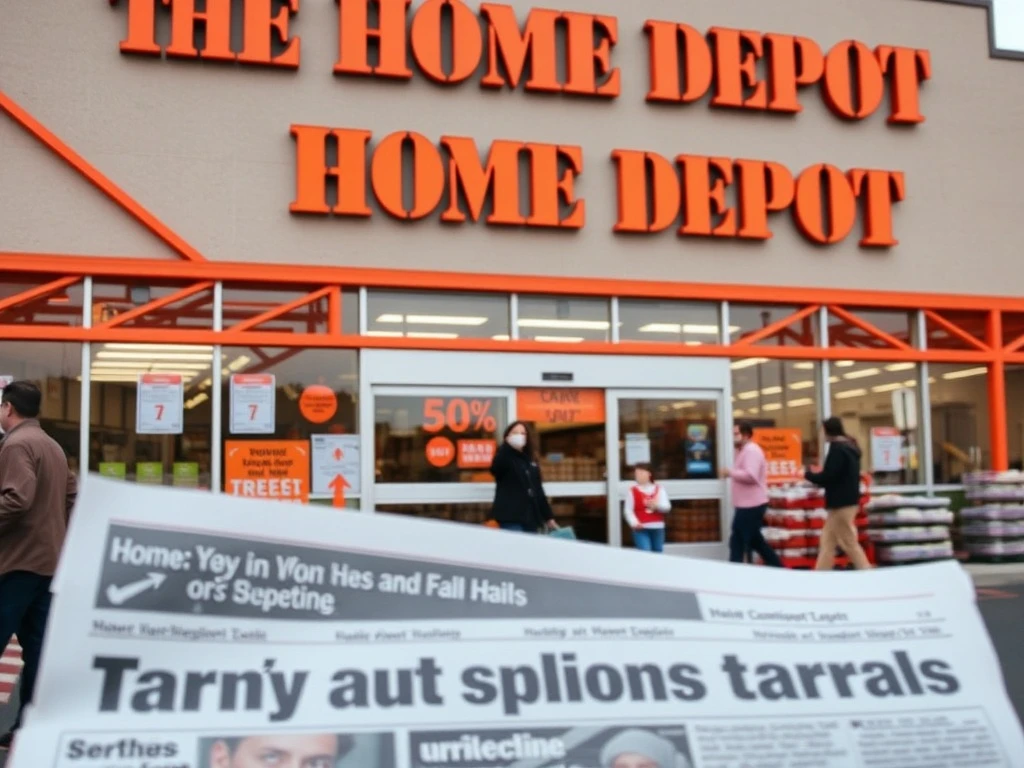Home Depot’s surprising reversal on tariff-related pricing reveals critical insights for consumers and investors watching retail sector responses to trade policy changes. The home improvement giant previously assured customers that tariffs wouldn’t affect pricing, but recent developments tell a different story entirely.
Home Depot Tariffs Policy Shift Explained
Home Depot initially maintained that supply chain adjustments would absorb tariff costs. However, the company recently acknowledged that sustained tariff pressures forced a strategic reconsideration. Consequently, consumers now face higher prices across multiple product categories. The decision reflects broader retail challenges in managing cost increases while maintaining competitive positioning.
Impact of Tariffs on Retail Pricing
Home Depot tariffs represent a case study in retail economics. The company’s reversal demonstrates several key points:
- Supply chain limitations prevent complete cost absorption
- Prolonged trade policy changes require pricing adjustments
- Competitive market pressures influence timing of increases
- Consumer demand elasticity affects implementation strategy
Consumer Response to Home Depot Price Changes
Market analysts observe careful consumer reactions to Home Depot tariffs implementation. Many shoppers express understanding of economic realities while others seek alternative suppliers. The company maintains transparency about cost drivers, providing detailed explanations for specific product category increases.
Industry-Wide Implications of Tariff Policies
Home Depot tariffs decision influences broader retail sector approaches. Competitors monitor consumer response patterns and adjust their own pricing strategies accordingly. The situation illustrates how major retailers navigate complex trade policy environments while balancing stakeholder interests.
Future Outlook for Retail Pricing
Industry experts predict continued pricing adjustments across retail sectors. Home Depot tariffs experience suggests that temporary cost absorption strategies may give way to permanent pricing changes. Companies increasingly factor trade policy volatility into long-term planning and customer communication strategies.
Frequently Asked Questions
When did Home Depot change its tariff policy?
The company announced its pricing strategy revision during Q2 earnings call, citing sustained tariff pressures and supply chain challenges.
Which products are most affected by price increases?
Imported goods including tools, electrical components, and seasonal items experienced the most significant price adjustments due to tariff impacts.
How do Home Depot tariffs compare to competitor pricing?
Industry analysis shows similar pricing adjustments across home improvement retailers, though implementation timing and magnitude vary by company.
Will prices decrease if tariffs are reduced?
Company representatives indicate pricing would reflect cost reductions, though specific implementation would depend on market conditions and competitive factors.
How can consumers mitigate tariff-related price increases?
Experts recommend comparing prices across retailers, timing purchases with promotional periods, and considering alternative product options when available.
What percentage of Home Depot products are affected by tariffs?
Approximately 15-20% of product inventory faces direct tariff impacts, though secondary effects influence broader pricing structures.








